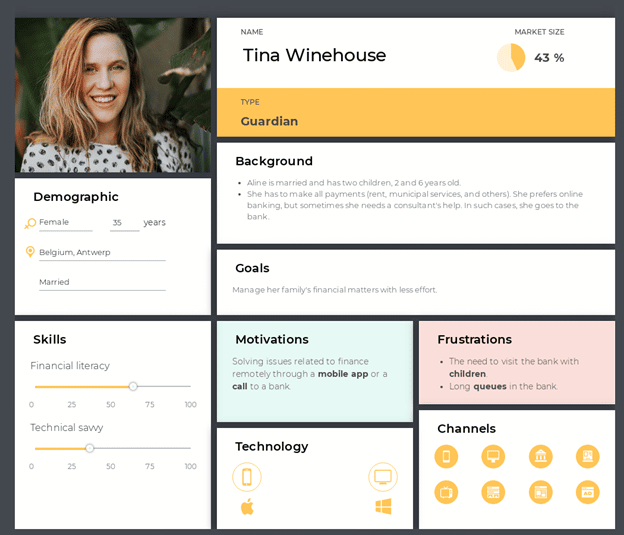There are dozens of pretty similar businesses in B2B and B2C segments. They don’t create innovative products or new markets. Instead, they try to achieve competitive advantages in the existing ones. Most likely, your business follows this way, too. Being one of the many fishing vessels in the red ocean, your company needs to beat a large number of competitors to get and retain a couple of customers.
IMAGE: UNSPLASH
In turn, having a wide range of offerings, consumers are becoming choice millionaires, picky and demanding. They want the best price, quality, and service — all at once. The COVID-19 pandemic fundamentally affected customers’ perception of companies. For instance, 50% of the US people consider customer service a priority factor when deciding to buy from a brand.
The thing is that your customers are different. They have dissimilar goals, concerns, frustrations, and motivations to purchase. And your company should consider these points if it wants to thrive and grow.
But how to understand your customers and meet their diverse needs? Here is where customer personas come into play.
What Is A Customer Persona?
A customer persona or a buyer persona is a detailed portrait of a particular group of your customers with similar experiences and behaviors in terms of using your product or service. Creating personas is a bit like a market segmentation process. But when building customer personas, you primarily reveal your customer goals, motivations, preferable channels, jobs to be done related to your product or service, and other important things that impact their experience. These are all behavioral attributes that you can use for audience segmentation.
You may think that a customer persona is a kind of a hard-to-read text file saved in the “Our Personas” folder on your PC. But a well-designed persona is rather a detailed profile of a “real” individual with relatable descriptions than an ordinary MS Word document. Have a look at the example below.
Usually, a persona profile includes a photo, a type of persona according to your classification (e.g., Rational type), persona’s motivations, frustrations, background information to provide context, technologies used by the persona, channels, etc.
Why Do You Need A Buyer Persona?
The main idea behind customer persona building is getting a better understanding of the people who buy from your company. How do they use your products or services? What problems do they solve with them? What goals do they intend to achieve?
Putting consumers into the context of your business gives you a hint of how to improve your offerings for these groups and create a good user or customer experience to attract and retain them. Who knows, maybe your customers found new ways of using your product, for example, removing juice stains on carpeting with a shaving cream you produce.
Creating personas also gives you insight into your customers’ needs. You can use these discoveries every time your business makes a tactic or strategic pivot, such as:
- launching a new product;
- updating your pricing;
- improving product or service, for example, when you consider adding new features or changing your product/website/delivery service significantly;
- entering new markets or regions;
- mapping out product distribution strategies, for instance, when you think about collaborating with social influencers or adopting AI in affiliate marketing.
You may have noticed that we are talking about personas, not a persona. It means you need to establish the final number of buyer persona to create beforehand. Usually, four or five buyer personas are enough to describe your entire target audience. However, it is a good idea to choose one persona as your primary focus.
How To Build A Buyer Persona?
There are four steps to take for creating a customer persona:
- Research and definition phase. Primarily, you need to amass all customer data your company has. To do the job, you can use your website analytics, input from your customer support team and sales department (i.e., questions they receive from clients or product demo records), and one-to-one interviews with your regular customers. Additionally, do not hesitate to make assumptions about your target audience’s behavior and preferences based on open resources such as trend researches or market reports relevant to your niche and region. At this stage, your task is customer behavior analysis to define customer groups based on behavioral attributes.
- Visualization phase. Having gathered enough quantitative (numbers) and qualitative (facts and opinions) data around your customer segments, you need to represent this information in an easy-to-digest format. There are dozens of tools to visualize customer personas: from professional buyer personas and customer journey map software to simple alternatives such as Excel, PowerPoint, or even Canva. Besides, you can always start with sketching in a notebook.
- Presentation phase. Then, you need to showcase the result to your teammates, stakeholders, and boss to put everyone on the same page about who your customers are and align your personas with your department and business goals. That is why visualization is so important. Personas profiles help see real people behind conversions and empathize with them. As a result, your company can focus on the needs of “Mary the mom” instead of a pretty abstract 25-year old woman with two children from New Jersey.
- Active usage phase. Keeping your personas alive is crucial to get the most out of this personas technique. Otherwise, there is little point in creating them. You need to revise and update personas regularly using the latest information you have about your clientele. If you rely on outdated information, there is a chance you will lose your way and target the wrong customers.
Wrap Up
Customer personas enable you to build a bridge between your audience and business and find something that stands your company out of the crowd. To create them from scratch, you will need an engaged cross-department team. This task will take your time, but your efforts will pay off.
Personas are valuable assets in building a successful marketing, product, or development strategy. They are full of insights that help you generate ideas and make decisions backed up by real data. They guide your product or service development and facilitate creating the best possible user experience. Remember to face the wind for good fishing!
Author Bio: Elena Sinekovich – As a content writer at UXPressia, I am keen to find and share best practices that pros use in B2B and B2C marketing. Follow me: LinkedIn | Twitter
IMAGE: UNSPLASH
If you are interested in even more business-related articles and information from us here at Bit Rebels, then we have a lot to choose from.




COMMENTS